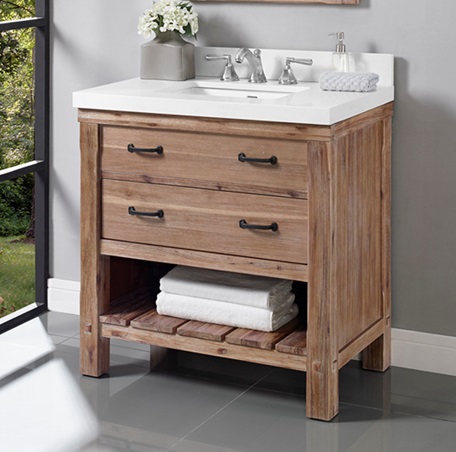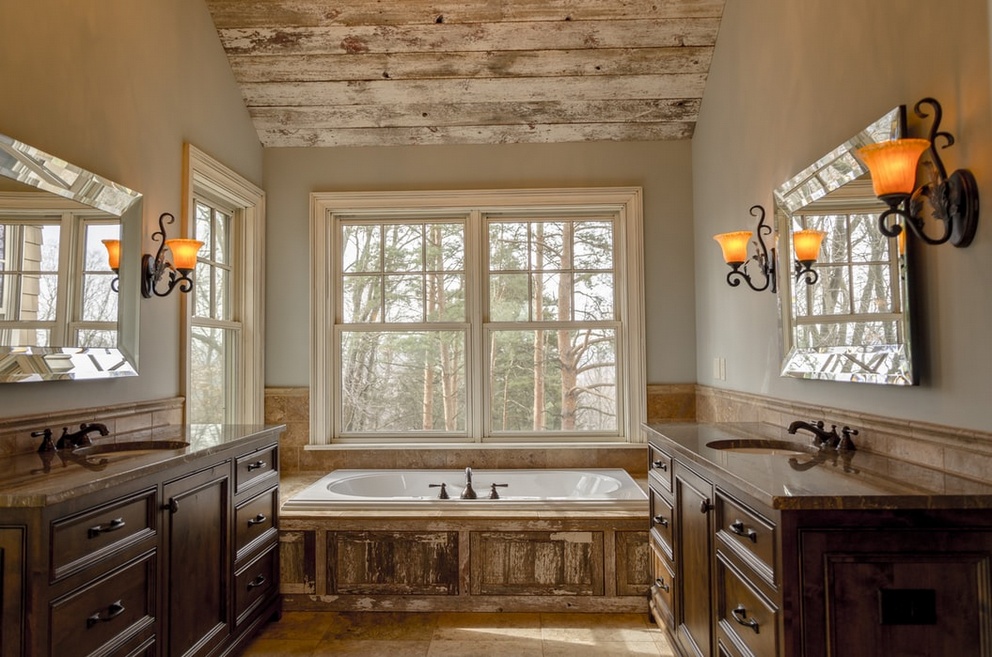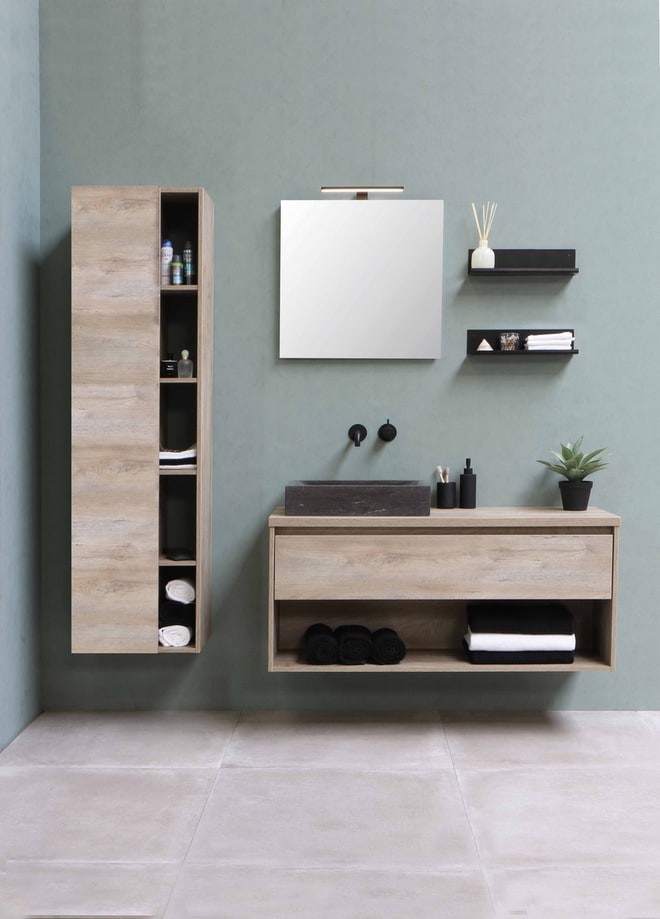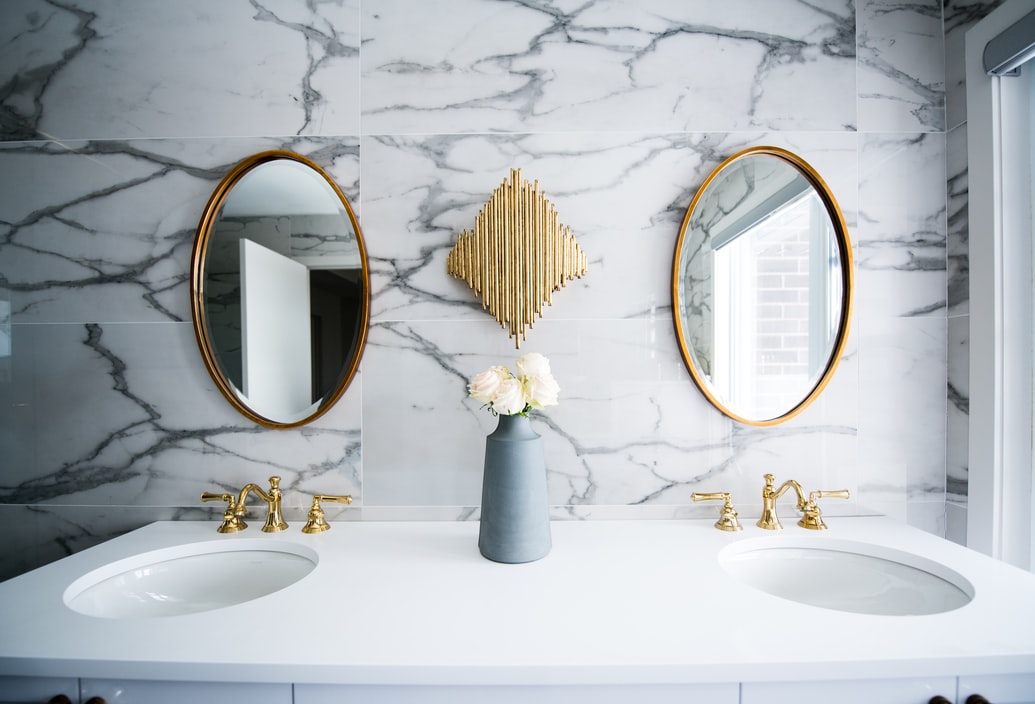The bathroom vanity takes care of the overall esthetics of the room while ensuring you have enough space for your bathroom supplies. Its elements can compris of the sink, storage cabinets, and shelves in the bathroom.
Typically, the vanity has to withstand wear and tear arising from daily use. It also has to be resistant to water, soap, creams, steam, and cosmetics. Porous material cannot make a good bathroom vanity. Yet, read om to get a good sense of what types of vanities are right for you.
Types of Bathroom Vanities
Bathroom vanities can be classified into three categories:
- Shelf
- Wall-mounted
- Standing cabinet-style
1. Shelf Vanity
With a shelf vanity, you only need a sink and an open cabinet below it. It is the easiest to install and the cheapest of all vanities. The vanity gets mounted under or next to a mirror. Which can be a great option for smaller bathrooms.

The remodeler will typically place the vanity shelf on the floor. Ideally, the top surface is for accommodating the sink, your workstation, and storage for soap. The bottom shelf tends to be an open space where you can have your towels or baskets to store bathroom supplies.
2. Standing Cabinet-Style Vanity
When yu talk about bathroom vanities, many people will think of the standing cabinet-style vanity. It is the most common vanity style, usually mounted on the floor and wall for stability. These vanities can support any type of bathroom sink, except the pedestal sink.

Several variations of the vanities are available, ranging from narrow ones that hold only one sink to wider ones that hold up to two sinks. They also have a spacious countertop. The cabinet also plays the role of hiding the plumbing fixtures.
3. Wall-Mounted Vanity
The wall-mounted vanity is rising in popularity as it gives the bathroom a sleek, modern look. The mounting is only against the wall, thus the name floating vanity. The good thing is that the vanity leaves a gap between the wall and bottom unit, giving you an easier time cleaning.

One of the significant disadvantages of the wall-mounted vanity is its susceptibility to impact and damage. It does not have floor support, meaning you have to use sturdy material in installation for it to last long.
Materials that Make Bathroom Vanities
Bathroom vanities are made of different materials. Wood is a common material for cabinets, but countertops require different materials. As such, countertops may be products of:
Quartz
Its price is relatively the same as the price of marble and granite. It is a durable material, requiring little to no maintenance.
Quartz is also resistant to heat, water, and grease.
Porcelain
A key characteristic of porcelain is that it is only available in white. It is a durable material that is easy to clean.
Stone
Includes granite and marble and is the most durable material for bathroom countertops. Stone can handle water, heat, stains, and wear.
Laminate
It is typically less expensive compared to stone and is available in various colors and textures. Its versatility allows it to mimic the appearance of stone and quartzite. Although laminate can withstand water and stains, you have to be careful with heat as it can burn easily. If you're interested in a quote please feel free to contact DMV Kitchen & Bath with any question regarding your next bathroom project.
